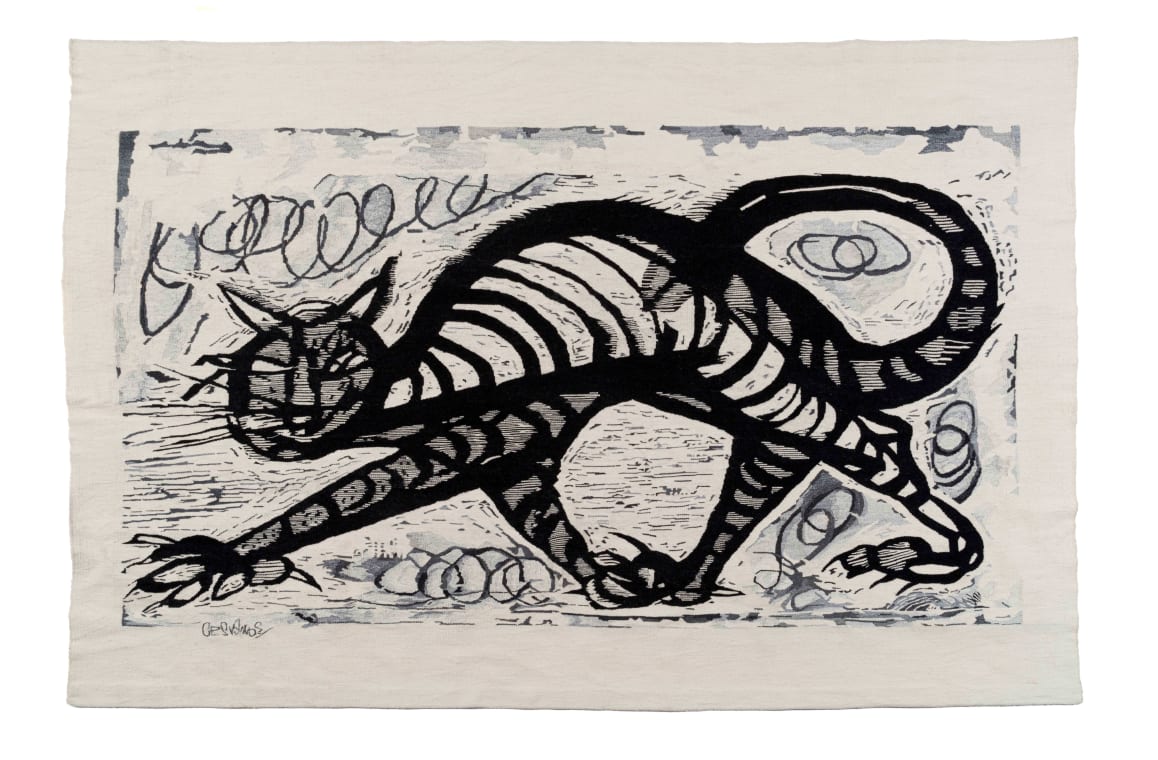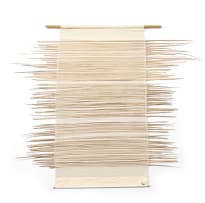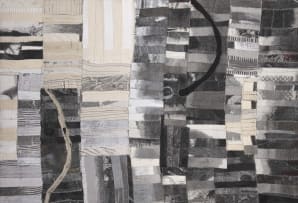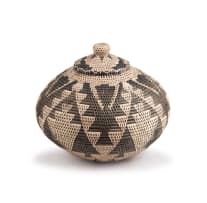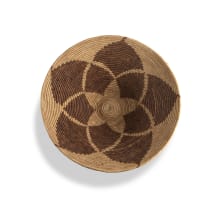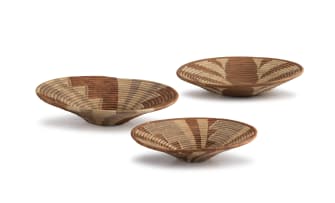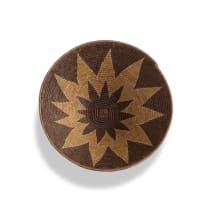Woven Legacies: Innovation & Tradition
Timed Online Auction, 2 - 24 February 2025
Innovation & Tradition
About the Session‘Woven Legacies: Innovation & Tradition’ highlights a diverse range of materials, techniques, and processes from various regions, including Southern, Central and Western Africa. These works coalesce utility, aesthetics and cultural identity. From the tactile threads of textiles to the intricate blending of natural fibres in baskets and the sculptural forms of steel, copper, brass and beads, the concept of weaving is reimagined as a metaphor for connection, storytelling and the passing on of tradition.
Incl. Buyer's Premium & VAT
About this Item
inscribed with the artist's signature in the tapestry; dated 2024, numbered 4/5, signed by Pippa Skotnes, inscribed with the artist's name, the title and 'woven in the Stephens Tapestry Studio'.
Notes
In Pippa Skotnes' monograph on her father's work titled At the Cutting Edge: Cecil Skotnes as Printmaker she talks about the origins of Cat: "The image I remember most clearly from my early childhood...was a large cat, roughly cut in wood and printed by hand...It was apparently a portrait of a friend's one-eyed cat which hunted for its dinner and gave its name to my own, more gentle pet, Kotchka."1
It is this cat, noted in the printed artwork by Cecil Skotnes above, that has been woven as a mohair tapestry at the Stephens Tapestry Studio by Ncobile Zikalala; Margaret Zulu; Sindile Matsebala, directed by Christine Weavind.
Known as an artist, mentor, and teacher, Cecil Skotnes believed in nurturing talent and encouraging creativity. Born in East London, the son of Norwegian missionaries, Skotnes studied Fine Arts at Wits University after WWII. In 1952, he was employed to run the Polly Street recreation centre, which became the only art school available to black students in South Africa; training Sydney Kumalo and Ephraim Ngatane, among others. Encouraged by friend and mentor Egon Guenther, Skotnes turned his hand to woodcarving and produced many ground-breaking coloured carved panels and woodcut prints, often with images of neglected South African histories. He carried out significant public commissions, sometimes in collaboration with other artists such as Sydney Kumalo. Skotnes is remembered for his artistic innovation and major contribution to the diversity of South African art.
1.Frieda Harmsen (ed) (1996)Cecil Skotnes, exhibition catalogue, Cape Town: South African National Gallery, page 84.
